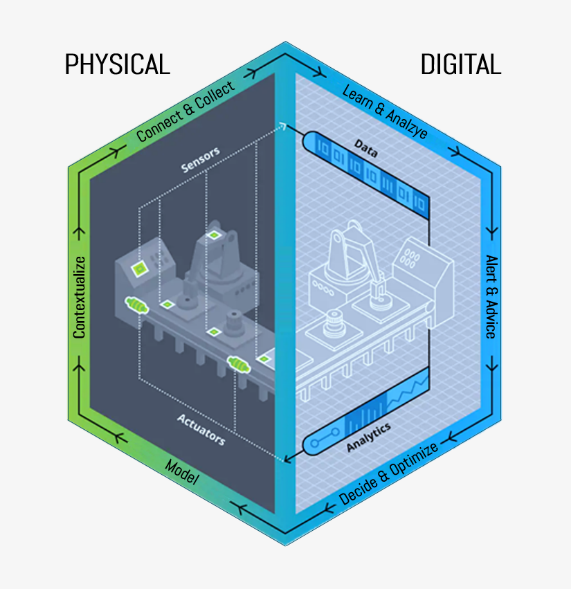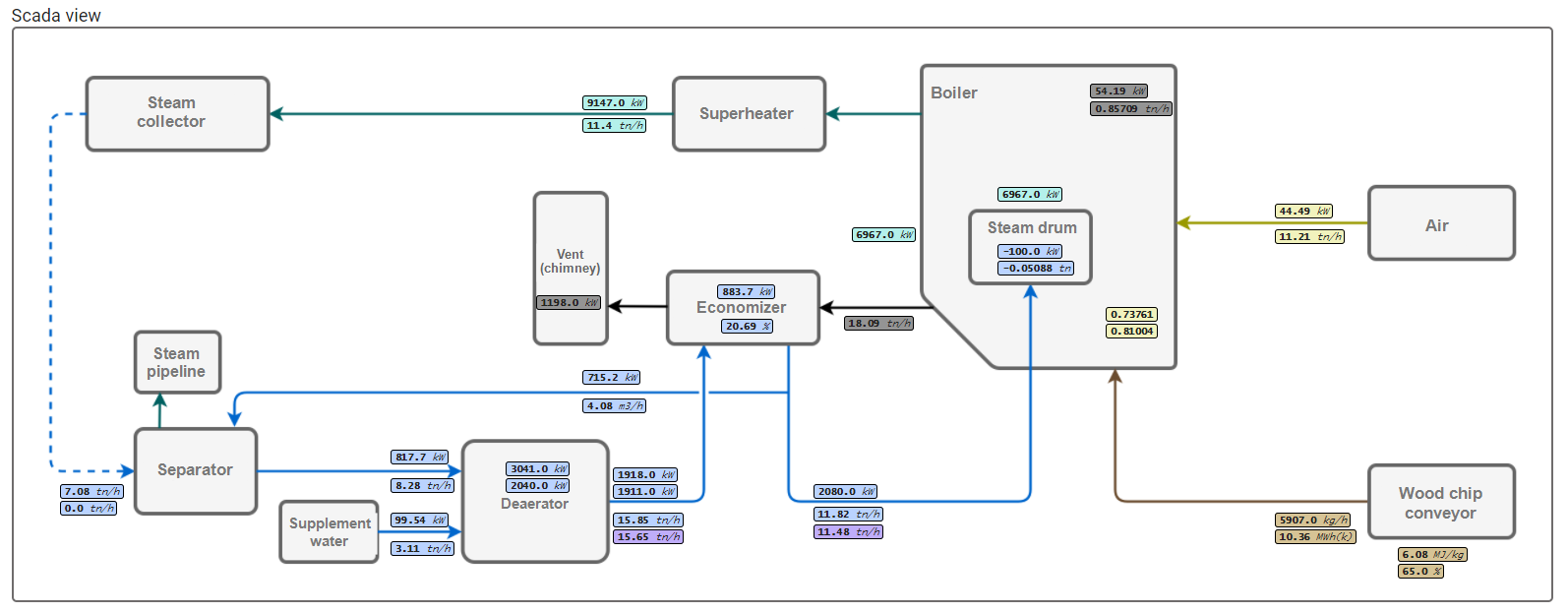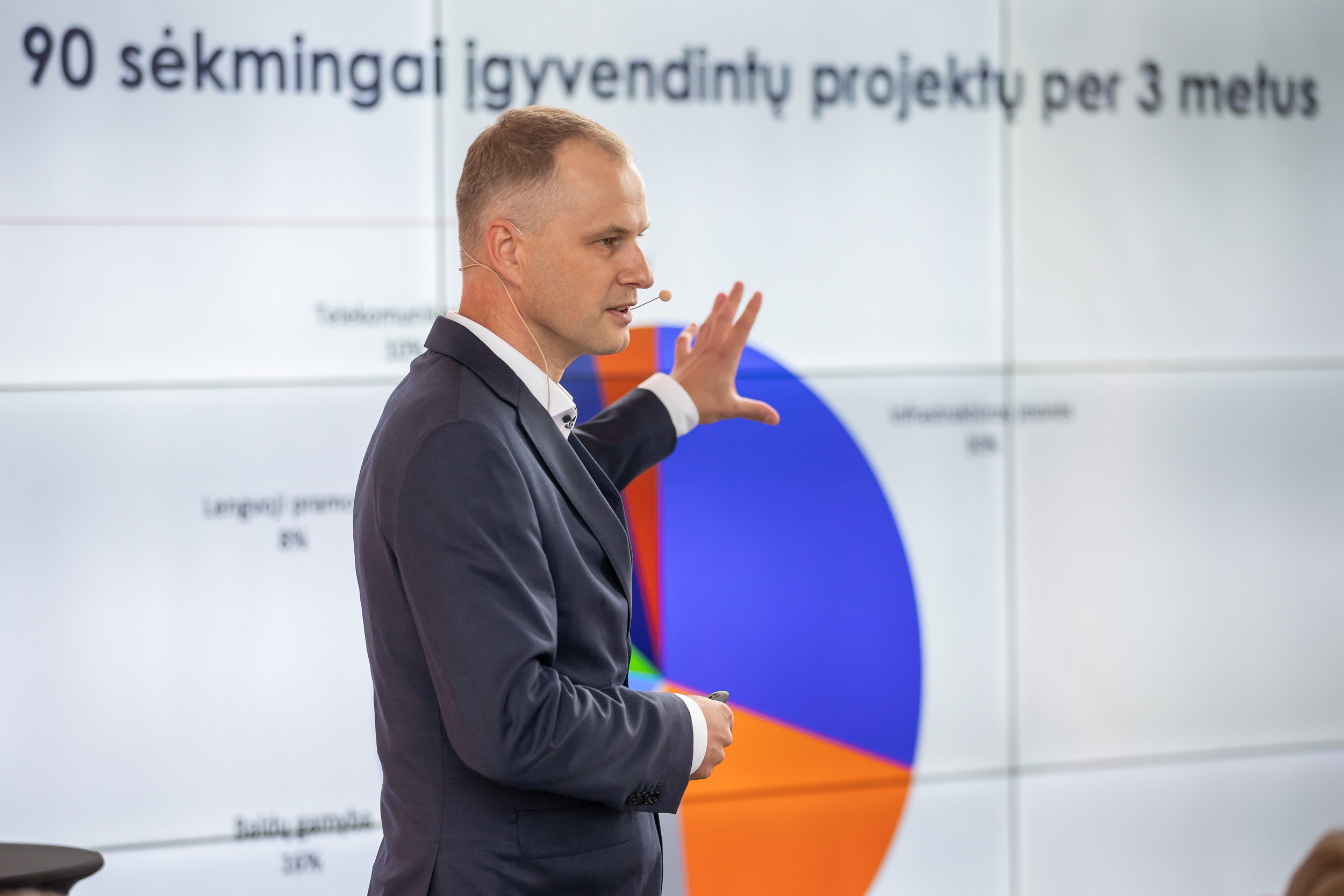Nowadays, as climate change is becoming a challenge, new directives and social initiatives are enforced to reduce CO2 emissions. Sustainable approaches are used to reach CO2 goals. On one hand, the solution is to move to cleaner renewable energy sources. On the other hand, use of digitalization solutions to increase sustainability of existing systems and increase efficiency are apparent.
Here, we are going to talk about digital transformation for biomass boilers. At first glance, it might seem that there is no possibility to maintain biomass boiler in more efficient ways, but with new technologies like digital twin, biomass boiler operation goes to the next level.
The Next Step for Biomass Boiler Efficiency is Digital Twin Technology
The concept of a digital twin has been around since 2000, but only now thanks to the Internet of Things (IoT), it has become cost-effective to implement and is getting used in many sectors from Aerospace to manufacturing companies.
What is Digital Twin technology? It is a virtual model of a process and equipment. It is like a bridge from the physical to digital world.
Talking about digital twin technology implementation for biomass boilers, we are going to present the analytical system EA-SAS Boiler. It analyses real-time biomass boiler data to ensure efficient maintenance, optimal production, and ensures safety. EA-SAS Boiler collects real-time data to create simulations that can give optimal set points on how to control Biomass Boiler in the most efficient way. It is a digital representation of biomass boiler and all related processes. Installing EA-SAS Boiler is the final step of digitalization—using all of the collected data to simulate how complex processes (for example, burning process) behave and how to control it. Such simulations allow us to understand how to increase the fuel burning efficiency in real-time.
In essence, a digital twin is the physical object simulated using a vast amount of mathematical expressions to simulate the working process and find optimal working set points to deliver to the existing Control System.
How to Use Digitalization to Increase the Efficiency of the Burning Process
As biomass boilers are too complex to be efficiently handled by a human, a Control System is used. The installed system already increases a biomass boilers efficiency to a certain degree, but it can go higher. The Control System is not able to analyze fuel calorific value and water content of the fuel in the furnace, so it cannot effectively manage the burning process, but it does store the data needed to calculate what is happening in real-time. Control Systems do not cover and do not guaranty maximum efficiency in full range of Boiler operation and conditions.
Therefore, dedicated analytical systems based on Digital Twin and data analytic technology are used to simulate the burning process and find not only the optimal working conditions at any given time, but also gather data such as fuel calorific value and moisture content in fuel that is being burned right now.
Digital Transformation Benefits
Data reliability or blind spots
The existing boiler Control System is only able to see data that is being collected by installed meters. The existing Control System use data for Boiler control. However, Control System rely on metering data and do not understand precision deviation over time. So, the data quality depends on if the meters are installed correctly, if the meter is functioning correctly, and whether or not it is worth installing another meter to see more data.
EA-SAS Boiler analyzes measured data and provides estimation of measurement precision; it also calculates parameters that have not been collected, because metering devices are not available. For example, what is the current quality of fuel that is being burned in the furnace? In practice, samples of a batch are taken just before the fuel goes into the furnace, so the test results arrive after the fuel has been burned. This means that lab tests cannot be used to effectively manage the burning process in real-time.
Using EA-SAS Boiler, it is possible to calculate the parameters of the fuel being burned in real-time. Using already measured data, fuel calorific value and moisture content can be analyzed, thus allowing boilers to operate in real-time.
Same heat output using less fuel – Lower CO2 emissions
Most boilers do not have a dedicated system to weigh fuel input or have it near boiler, but not inside the furnace. This means that usually it is impossible to know the amount of fuel being burned right now. Digital transformation makes it possible! EA-SAS Boiler calculates it by analyzing the burning process also as heat output and reports what the optimal amount of fuel is to produce the same heat amount.
Predictive maintenance – Increase sustainability
Another benefit of using a digital twin based technologies is simulating and tracking the efficiency of the boiler. This allows visualization on the optimal point for scheduling maintenance and evaluate completed maintenance effects on Boiler working conditions. The graph below shows calculated efficiency using real-time data in blue and forecasted efficiency in red over a period of time. Fluctuations are caused by inefficient control of the boiler, optimally it should be as close to calculated optimal values.
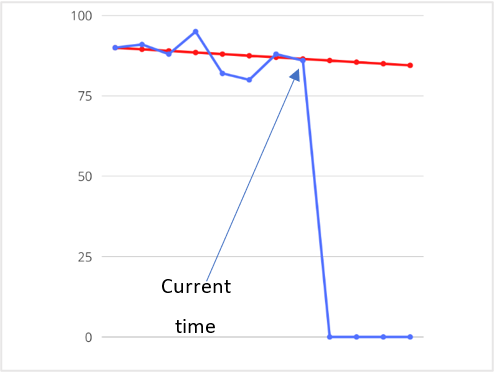 Example of inefficient biomass boiler control. Blue = calculated efficiency using real-time data. Red = forecasted efficiency
Example of inefficient biomass boiler control. Blue = calculated efficiency using real-time data. Red = forecasted efficiency
An additional benefit in being able to analyze the burning process is the possibility to find out how flue gas in furnace temperature affects the lifetime of biomass boilers.
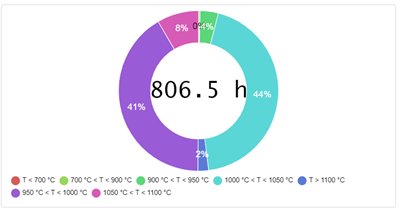 Seeing the effects of flue gas in furnace on the boiler also shows the optimal time to schedule maintenance. Most of the time, equipment is replaced before there is a real need to, but other times the lifetime can extend so far it leads to failure; the time between these points is the value the customer gets as illustrated in the picture below.
Seeing the effects of flue gas in furnace on the boiler also shows the optimal time to schedule maintenance. Most of the time, equipment is replaced before there is a real need to, but other times the lifetime can extend so far it leads to failure; the time between these points is the value the customer gets as illustrated in the picture below.
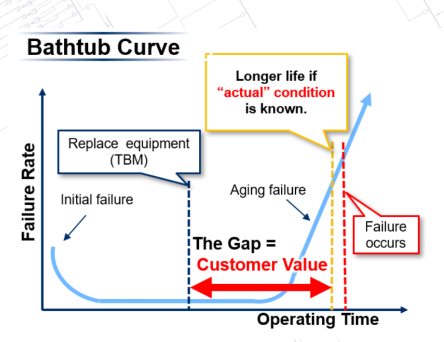 How to achieve benefits in practice
How to achieve benefits in practice
Digital twin solutions simulate how the boiler works in real-time by running complex analytics on gathered data. By basing calculations on data collected five minutes ago, it is possible to estimate the current burning process and forecast.
Most of the time, essential parameters are already being measured and collected in the database—steam/water flow, flue gas temperature, steam temperature, oxygen level in flue gas, and others. To integrate digital transformation solutions, only accessing the Control System database is required.
Conclusion
New technologies like digital twin is the new trend that will drive innovation. The physical implementation of digital twin technology for biomass boilers can be easily achieved with such analytical tools like EA-SAS Boiler. It is increasing the efficiency of the burning process, thus reducing fuel consumption and increasing boiler operation sustainability.


